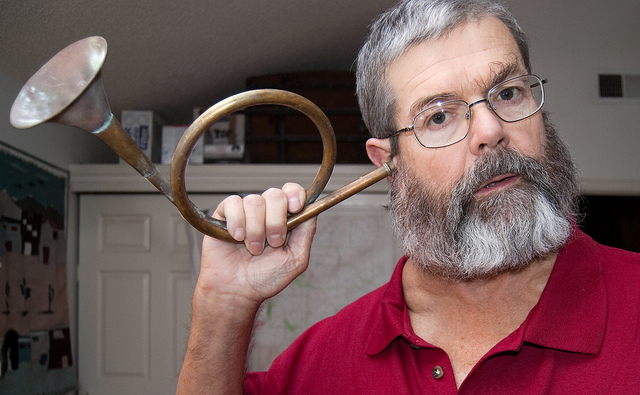Tag Archives: health
What to Know About Installing a Stairlift in Your Home

As you have gotten on in your years, the aches and pains of a life of hard work have slowly increased. For the most part, you have been able to shrug it off and soldier on, but recently, the pain of getting yourself up the stairs to your private domain have proven to be almost unbearable.
After weeks of living in denial, you have decided to acknowledge the plain truth of the matter: you need assistance of the mechanical variety to avoid burdening your also aging spouse. Fortunately, there are affordable stairlift solutions that won’t break the bank, which is important to you and your partner, as you are both on fixed incomes that can’t take a lot of heat.
If you are still stopped up by “what-ifs?” though, permit us to assuage your fears by addressing some common objections to getting a stairlift installed in your home.
No costly renovations required
This is the first and most common challenge raised by prospects when considering bringing a stairlift into their home. Bringing in this contraption is going to cost a fair bit of money, but it is often perceived that installing such a machine will require costly changes to the makeup of the house, driving costs through the stratosphere.
The excellent news is that the vast majority of stairlifts require no renovations to the existing bones of the house. All that needs to be done is to mount the rail to the tread of the stairs, and most planning required is when a staircase is curved, but even then, all that needs to be done is to affix the rail so that it attaches correctly to the stairs.
Easy to move and adjust
Another common objection is that such a device would be a burden and annoyance to able-bodied occupants and guests in the home. The reality of the matter is that most stairlifts fold out of the way easily when, for example, you need to move wide objects up and down the stairs.
Get a licensed technician to install your lift
So, you have decided to take the plunge and get a stairlift to help you remain independent within your own home. Great! However, we would advise that you inquire about getting a licensed installer to safely set up the device in your house.
A common trend nowadays has would-be thrifty consumers buying a stairlift, and then having a handy person with in their family attempt to install it themselves. This can lead to a serious accident down the road, as many do-it-yourselfers are unacquainted with the potential problems that occur from shoddy installation. What at first glance seems to be a perfectly functional stairlift could be a deathtrap in the making at some unknown point in the future.
Reclaim your independence
Don’t allow your age to rob you of your independence in the golden years of your life. By leveraging modern technology, you can continue to enjoy your home for many years to come, no matter what your decrepit joints have to say about it!
The History of Hearing Aids

Over the years, the lot of those who have developed or were born with hearing impediments has improved dramatically, in no small thanks to the dedication of passionate scientists in the auditory field who dared to dream that one day, the hard of hearing might be able to function in society on the same level as able-hearing people.
While those with hearing deficiencies today might take the latest modern digital hearing aids for granted, the truth of the matter is that this subset of technology has had a long and fascinating history. Let’s take five minutes or so to trace the history of hearing aids through the centuries…
Let There Be Sound
The first hearing aid was crafted in the 17th century, allowing the partially deaf to better understand conversations going on around them. Resembling a trumpet or horn one would play in an orchestra than the unobtrusive, discreet hearing devices we enjoy today, this early attempt allowed those with deteriorating hearing to understand their peers.
It came at a social cost though, as it made many of its users self-conscious of their disability at a time less forgiving of disabilities, as opposed to the wide acceptance that many benefit from in the present day. However, being a royal, the aging king of Portugal was crafted a hearing chair in the early 1800’s, which had discreet holes in the lion-head armrests (their mouths), which channelled sound up the back of the throne to hidden “speakers” just out of view at ear level.
Hearing Aids With Dignity
As the 19th century wore on, the rush was on to make hearing aids that were less embarrassing for the people who depended on them. One such innovative design was the acoustic headband, made by Frederick Rein, the same inventor that made the aforementioned chair for the Portuguese king.
Worn as a handband that blended in with the fashions of the time, the part of the device near the ear boasted collectors that would amplify sound within the immediate surrounds of the person wearing it.
The Deaf Hear Again (Or For The First Time)
With the development of the microphone and telephone in the late 1800’s, the electrification revolution was well underway, and it was only a matter of time before it found its way into smaller devices like hearing aids. While the first electric hearing aids at the turn of the 20th century were a bit too bulky to pass the social acceptability test, by the 1940’s, miniaturization has progressed to the point where these devices could be worn rather than carried, opening a new world to those who had been shrouded in silence prior to this.
The Digital Revolution
With the invention of the computer, hearing aids entered the digital era, as auditory scientists began to figure out how to leave behind the drawbacks of electric hearing aids in the 1960’s. Considering the size of CPU’s back then, miniaturization took some time to accomplish, and even in the 1970’s and 1980’s, the clunky appearance of the device led to slow acceptance.
In 1989 though, the first behind the ear aid was built, starting a wave of approval that took off in the 90’s, when a digital hearing aid small enough to be inserted in the ear tube like an earplug was designed. Not only did it attain the holy grail of discreteness, it also contained the technology within to auto-adjust to its environment, eliminating the need for an external modulator to be carried at all times.
What’s Next?
The pace of technology these days is dizzying, even in the niche hearing aid industry. Whatever the innovators in the auditory field come up with in the years to come is sure to amaze and astound even the most cynical skeptics!



